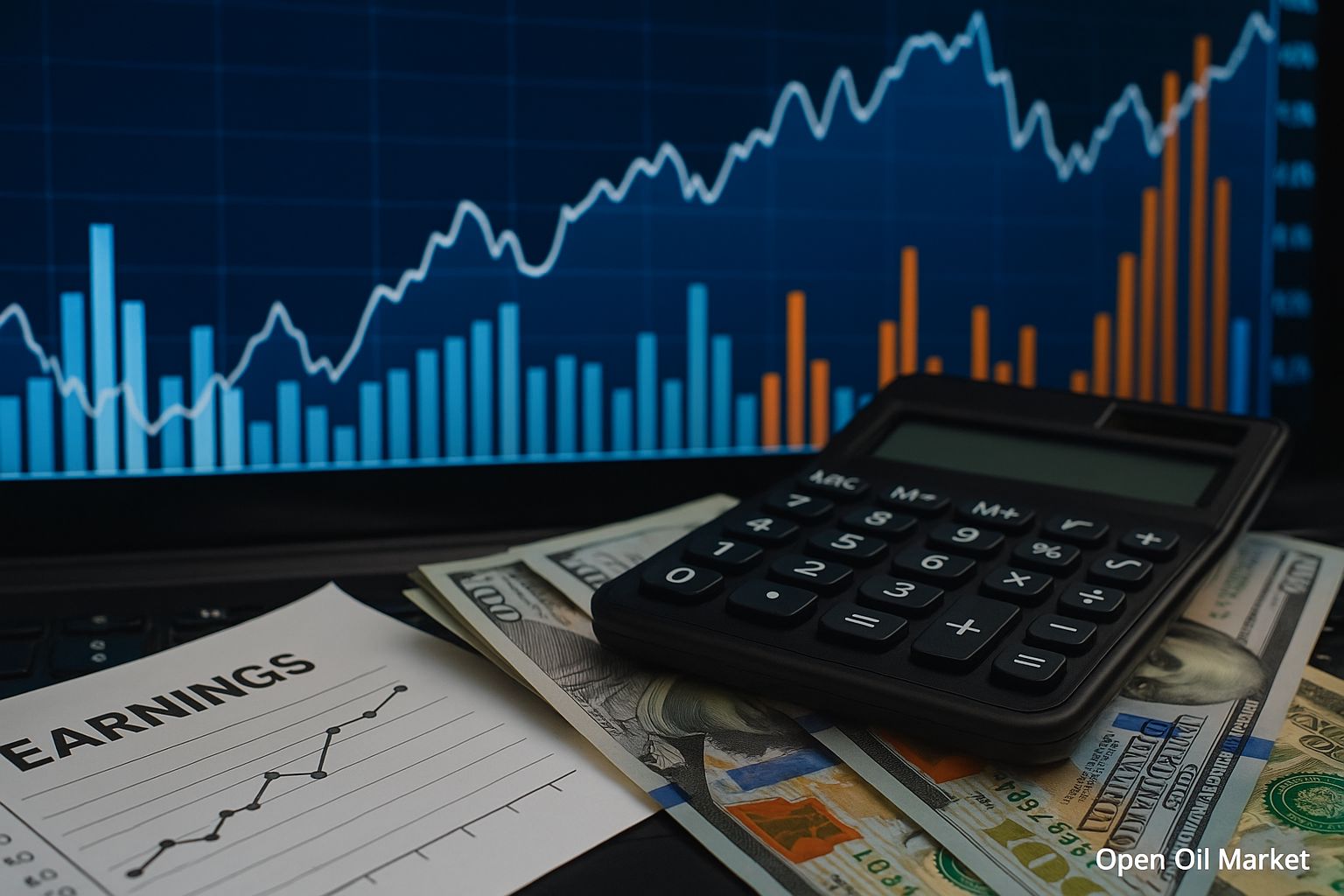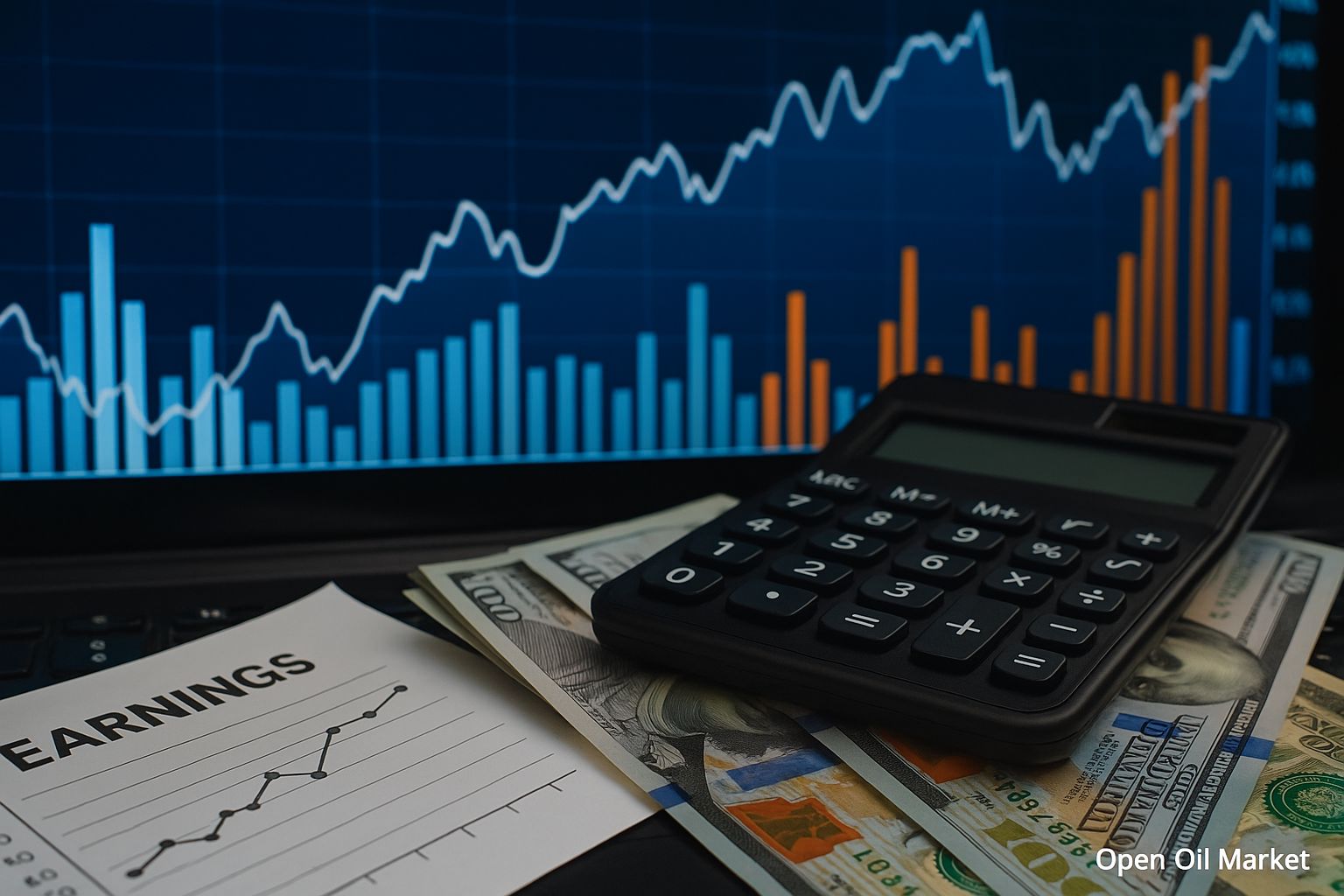
Economic Events and Company Reports – Tuesday, August 5, 2025 – U.S. PMI Indices and Trade Balance
Tuesday, August 5, 2025, will bring a series of significant economic events and corporate earnings releases that could influence investor sentiment and the dynamics of global markets. Investors from the CIS countries are closely monitoring key business activity indicators, foreign trade statistics, and financial results from major companies to assess the state of the global economy and the prospects for specific sectors. The combination of these factors will form the informational backdrop for the day, impacting currency rates, commodity prices, and stock index movements.
Key events for Tuesday, August 5, 2025:
- Australia – Services PMI (July) – 02:00 MSK.
- Japan – Publication of the latest Bank of Japan meeting minutes – 02:50 MSK.
- Japan – Services PMI (July) – 03:30 MSK.
- China – Caixin Services PMI (July) – 04:45 MSK.
- India – Services PMI (July) – 08:00 MSK.
- Russia – Services PMI (July) – 09:00 MSK.
- Germany – Services and Composite PMI (July) – 10:55 MSK.
- Eurozone – Services and Composite PMI (July) – 11:00 MSK.
- United Kingdom – Services PMI (July) – 11:30 MSK.
- Russia – Announcement of the Central Bank of Russia’s foreign currency operations volumes for August – 12:00 MSK.
- Eurozone – Producer Price Index (PPI) for June – 12:00 MSK.
- United States – Trade balance for June – 15:30 MSK.
- Brazil – S&P Global PMI indices (services and composite) (July) – 16:00 MSK.
- United States – S&P Global Services PMI (July, final estimate) – 16:30 MSK.
- United States – ISM Non-Manufacturing Index (services) for July – 17:00 MSK.
- Oil (U.S.) – Weekly API report on crude oil inventories – 23:30 MSK.
Global Markets: Expectations and Investor Sentiment
Global financial markets enter Tuesday with mixed sentiments. Asian markets are reacting to previous events: data from the U.S. at the end of last week prompted a reassessment of expectations regarding the Federal Reserve's interest rates, which helped partially stabilize sentiment on Monday. The Japanese Nikkei 225 index and other Asian indicators are showing cautious growth in anticipation of fresh macro data. European markets, such as the Euro Stoxx 50 index, are preparing to open with modest gains after a moderate uptick the day before. Futures for U.S. indexes indicate a restrained start to trading ahead of the release of key statistics.
Fed and Central Bank Policies: Market Expectations
The focus remains on the monetary policy of leading central banks. Weak U.S. labor market data for July has heightened expectations for an easing of monetary policy: investors are now pricing in a high probability of a rate cut from the Federal Reserve at the September meeting. At the last meeting, the Federal Reserve maintained its rate, so any new comments from Fed officials could adjust market expectations. Early Tuesday, the minutes from the latest Bank of Japan meeting will be available. Investors will analyze it for discussions about potential changes to ultra-loose policy against the backdrop of rising inflation and yen volatility. Any hints at a more "hawkish" stance could influence the yen's exchange rate and sentiments in Asia.
Business Activity and Foreign Trade: Macroeconomic Signals
Tuesday will see the release of a large block of Services PMI indices for July across key economies—from Asia to Europe. These indicators will provide insight into the state of the services sector, which remains a pillar of economic growth in many countries amidst cooling industrial activity. It is expected that PMI indices for China, India, and Russia will confirm continued solid growth (values remain significantly above the 50-point mark). In the Eurozone and the UK, final PMI values will likely indicate moderate expansion (around 51 points), signaling resilience in demand for services.
In addition to the PMIs, investors will pay attention to other indicators. At noon, Eurostat will publish the Producer Price Index (PPI) for June, likely confirming a decline in energy prices and easing inflationary pressures. Later, at 15:30 MSK, data on the U.S. trade balance for June will be released, showing how tariffs and changes in external demand affect exports and imports. Additionally, the ISM index for the U.S. services sector (17:00 MSK) will provide an assessment of business activity in the largest sector of the American economy.
Ruble Exchange Rate and Currency Market Dynamics
The Russian ruble enters August under the influence of mixed factors. The conclusion of the tax period at the end of July has weakened support for the national currency, and last week the exchange rate fell to around ~80 rub/$ amid balancing between high export revenues and geopolitical risks. On Tuesday, market participants anticipate decisions from the Ministry of Finance and the Central Bank of Russia regarding currency operations volumes under the budget rule for August. If the regulator resumes significant foreign currency purchases to replenish reserves, the ruble may come under pressure. Conversely, modest interventions or a pause could give the market a breather. The external backdrop remains crucial: an improvement in risk appetite in global markets could strengthen the ruble and other emerging market currencies, while new sanctions threats or a flight to safety could negatively impact it.
Russian Stock Market: Outlook
The Moscow Exchange Index is holding near local highs, demonstrating resilience due to high commodity prices and strong earnings reports from several companies. External signals (oil price dynamics, global market sentiments) and internal factors (financial results from Russian issuers for the first half of the year) will determine market movement on Tuesday. With a stable external backdrop, there are chances for continued gradual growth; however, further upward movement will depend on whether companies meet earnings expectations. Investors remain selective, considering ongoing uncertainties, and are ready to reassess risks if negative surprises arise.
Corporate Reporting: Company Profits
On Tuesday, investors will analyze fresh financial reports from several major publicly traded companies around the world. The release of second-quarter and first-half 2025 results will provide insight into revenue and profit growth rates across various sectors. Key focuses will include:
- Advanced Micro Devices (AMD) – Q2 2025 report (one of the leaders in the U.S. semiconductor sector, producing chips for data centers and AI).
- Ozon Holdings – financial statements for six months of 2025 under IFRS (the largest Russian online retailer).
- BP plc – financial results for Q2 2025 (a British oil and gas corporation, one of the leaders in the global energy sector).
These reports will allow an evaluation of the state of both the tech sector and consumer markets, as well as the commodity industry. For instance, investors will look to AMD's results for signals regarding demand for chips and developments in AI-related sectors, which is important for the entire tech industry. Ozon's indicators will illustrate the dynamics of the Russian e-commerce market amid a changing economy. BP’s report will demonstrate the impact of declining oil prices in the first half of the year on profits and business efficiency.
Overall, the corporate earnings season remains a key driver of sentiment in the markets. Strong results and optimistic forecasts from company management can support the growth of their stocks and improve overall market sentiment. However, disappointing reports or indications of slowing profit growth could trigger a wave of sell-offs in certain sectors. Investors will consider how well the reported numbers align with forecasts, adjusting their investment decisions as necessary.
Conclusion
August 5, 2025, is packed with events that could set the tone for financial markets. The published PMI indices and trade statistics will provide fresh insights regarding the health of the global economy, while corporate reports will reveal whether profit expectations are being met. The market's reaction to these data will reflect investor confidence: alignment between statistics and forecasts may strengthen current optimism and lead to relatively stable dynamics, while unexpected deviations could provoke capital reallocation and increased volatility.
Investors in the CIS countries should keep a close eye on the news of the day. A careful analysis of macroeconomic indicators (such as PMI, inflation metrics, and trade balance), combined with an assessment of corporate results, will help timely identify emerging trends. When necessary, it is advisable to promptly adjust the investment portfolio, considering new risks or opportunities. By maintaining a diversified approach and relying on fundamental analysis, investors will be able to navigate the changing market conditions with more confidence.




